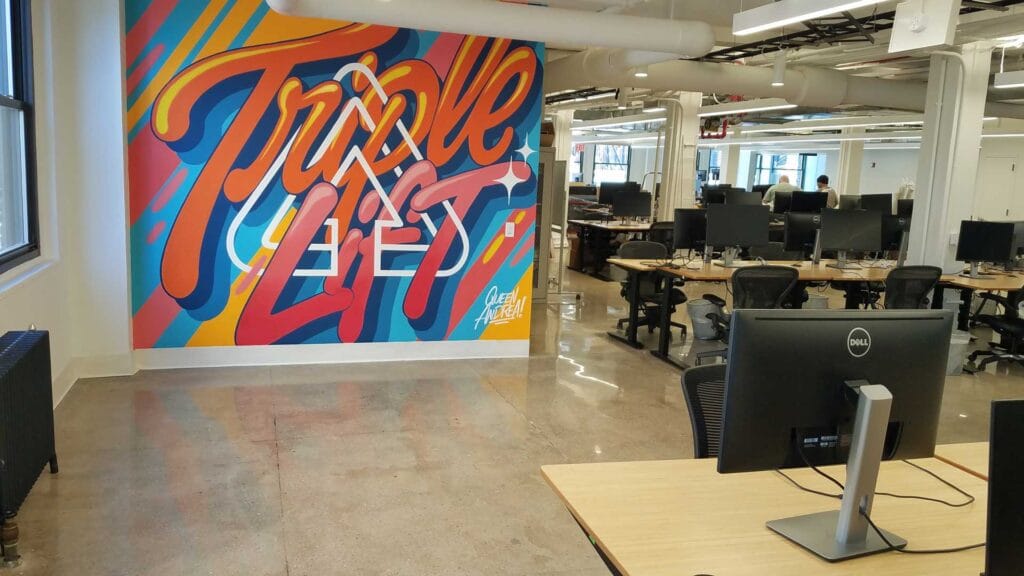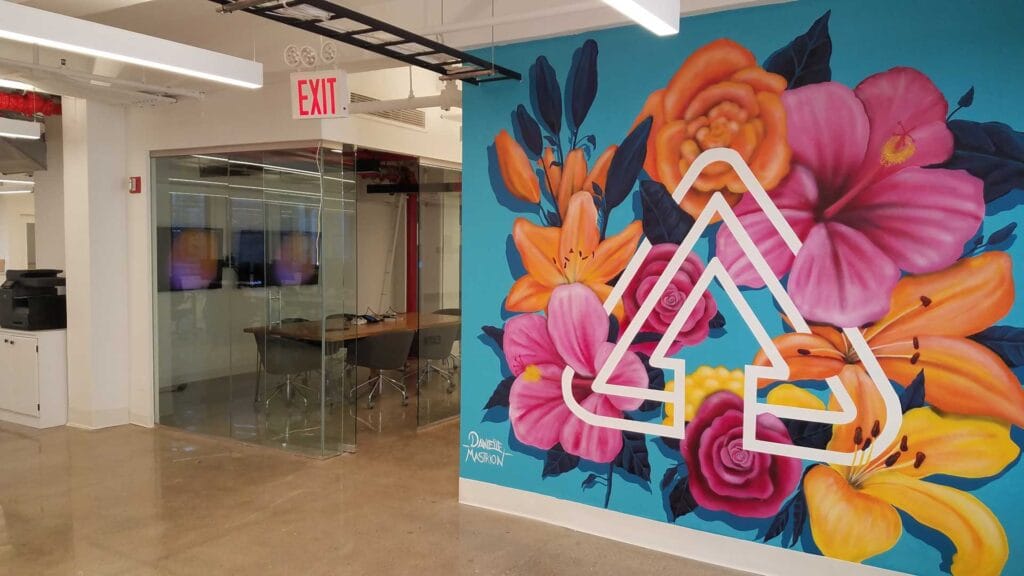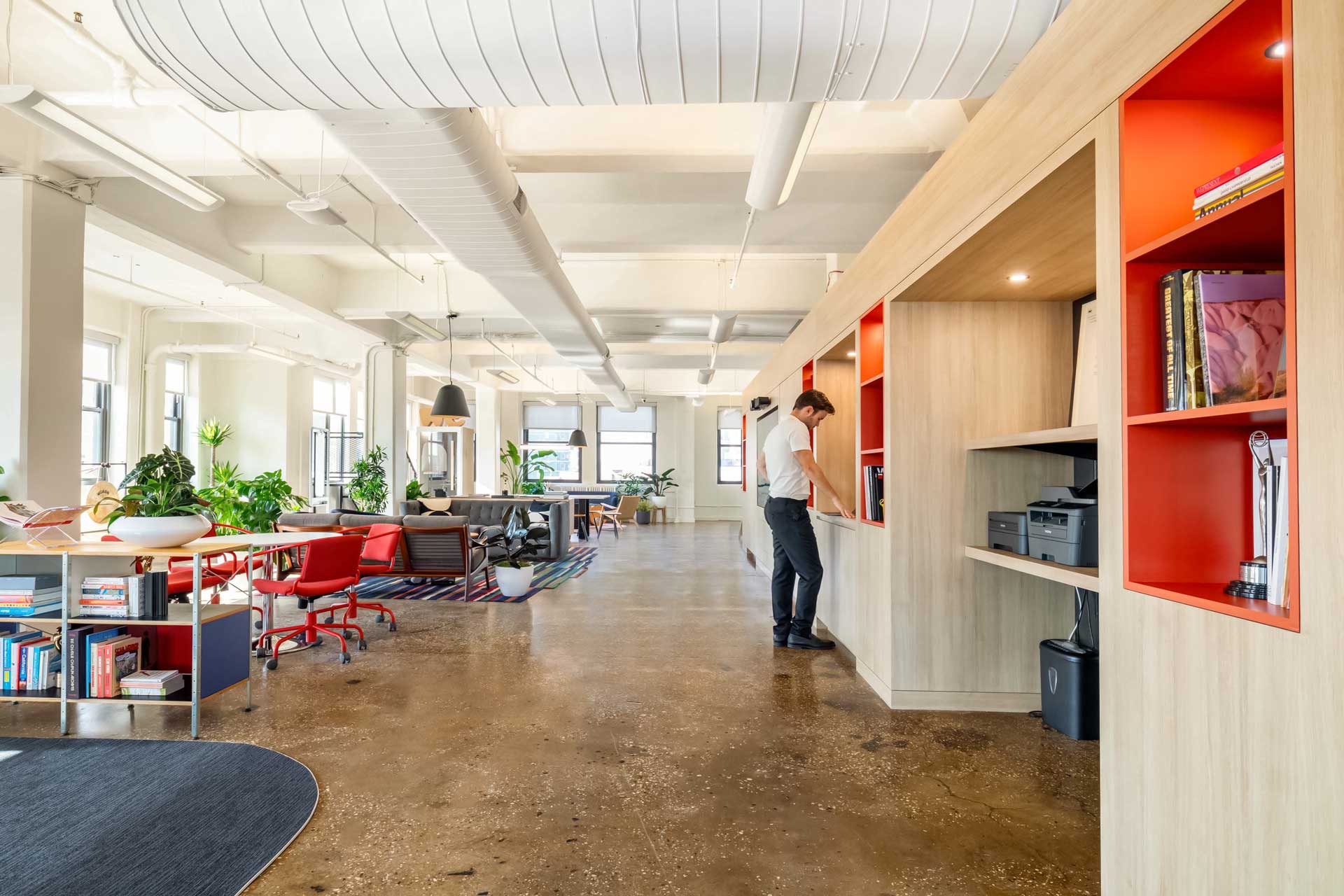
15 Jan Top 10 Office Design Trends for 2025
In 2025, more than ever, office design will play a pivotal role in attracting and retaining top talent. A thoughtfully designed workplace is no longer just functional—it’s a destination that inspires, connects, and supports employees in meaningful ways.
At RI, we believe a successful workplace should feel like a retreat:
- A place of productivity rooted in well-being and happiness.
- A sanctuary for finding focus and re-energizing.
- A space where bonds are effortlessly formed, and ideas flow naturally.
Our ethos is at the heart of today’s evolving office landscape. In this blog, we’re highlighting 10 transformative office design trends that align with this approach and will define workplaces in 2025.
1. Workspaces That Engage the Senses
Offices are embracing a multi-sensory approach to design, crafting environments that stimulate sight, sound, touch, and even smell. These immersive spaces are designed to energize employees, helping them focus or collaborate more effectively. From calming soundscapes in focus areas to vibrant textures in social zones, every element works together to create a memorable and impactful workspace.
What’s Out: Flat, one-dimensional designs that focus on aesthetics but fail to engage on a deeper level.
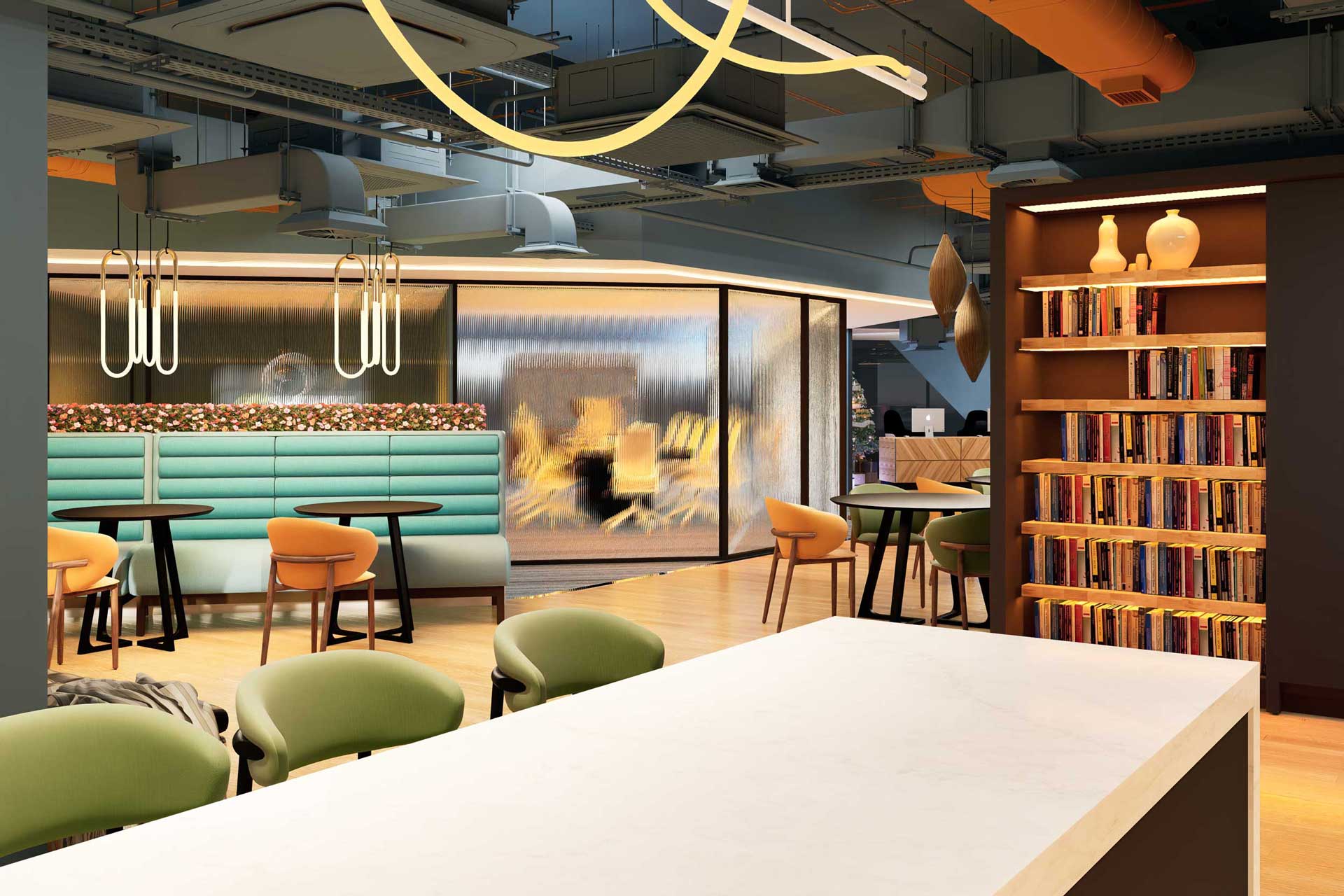
2. Flexibility Takes Center Stage
Gone are the days of assigned desks and rigid office layouts. Flexible workpoints allow employees to choose where they work based on their tasks or mood. Whether it’s a quiet corner for deep concentration or a collaborative lounge for team meetings, these versatile spaces prioritize adaptability and mobility.
What’s Out: Fixed desks and static seating arrangements that don’t adapt to evolving workflows.
3. Design with Purpose
Offices are being tailored to meet specific employee needs, moving beyond offering variety for variety’s sake. Whether it’s ergonomic furniture, customizable wellness programs, or collaborative zones, purpose-driven design ensures that every space has a clear function. This approach empowers employees, enhancing satisfaction and productivity.
What’s Out: Random design choices that lack thought or fail to add real value.
4. Collaboration Over Meetings
2025 is about replacing traditional meetings with co-creation spaces where employees can actively collaborate and innovate. These interactive zones boost creativity and connection, encouraging diverse perspectives and dynamic problem-solving. The focus is on working together in real time rather than passively listening to presentations.
What’s Out: Long, unproductive meetings with rigid agendas and little engagement.
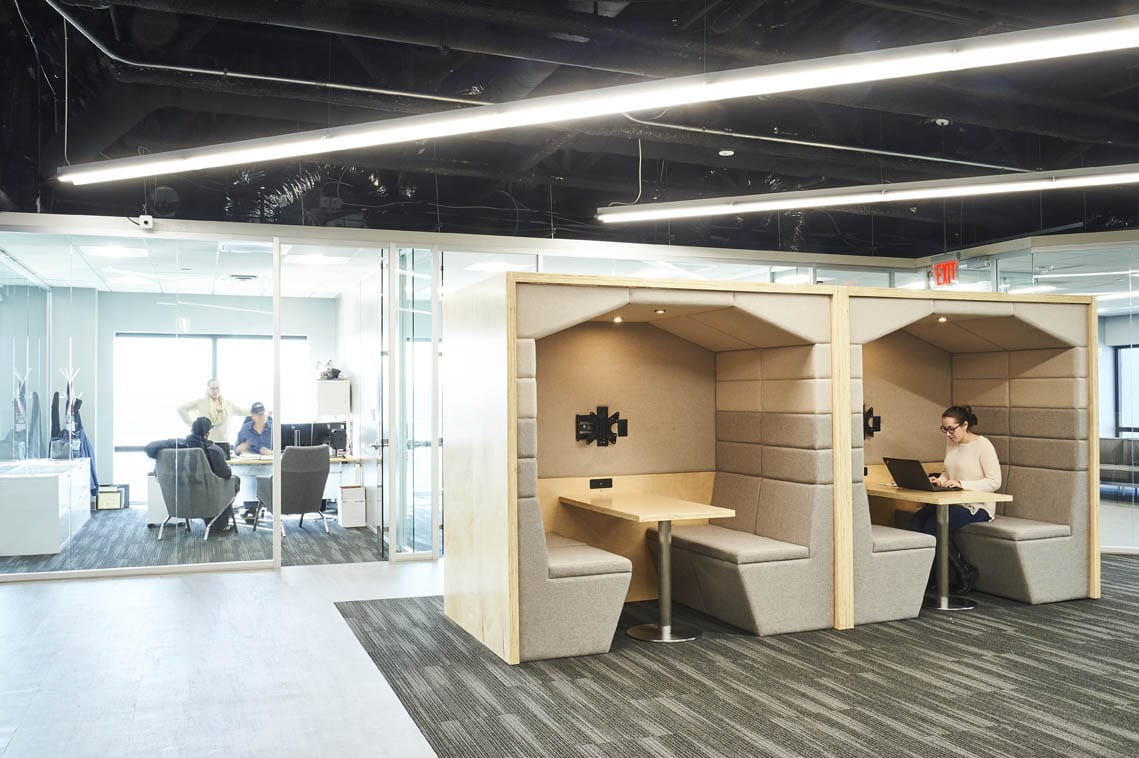
5. Inclusivity in Design
Creating inclusive workspaces goes far beyond meeting accessibility standards. Offices are now embracing a broader definition of inclusivity, designing for all personality types. From sensory-friendly areas to adjustable furniture, inclusivity is built into every aspect of the workplace to ensure that all employees feel seen, valued, and supported.
What’s Out: Spaces designed for the “average” employee, ignoring the diverse range of needs within the workforce.
6. Sustainability at the Forefront
Environmental responsibility continues to drive office design in 2025. Expect to see sustainable materials like recycled wood, bamboo, and energy-efficient lighting becoming staples of modern workspaces. Green roofs, solar panels, and smart energy systems are also gaining traction, reflecting companies’ commitment to reducing their environmental impact.
What’s Out: Designs that prioritize aesthetics over sustainability and eco-conscious practices.
7. Authentic Local Touches
Offices are embracing their local surroundings, incorporating unique cultural and regional elements into their design. From locally sourced materials to artwork that reflects the city’s vibe. Check out the stunning murals by New York artist Danielle Matrion, created as part of our project for digital advertising agency TripleLift—pictured above. We love this trend because it creates spaces that feel connected to their communities. Employees and visitors alike appreciate the authenticity and personal touch.
What’s Out: Cookie-cutter, corporate-branded offices that look identical no matter where they are located.
8. Shared Spaces Over Personal Ownership
The rise of shared amenities is transforming how office space is allocated. By pooling resources into multipurpose zones, companies can offer enhanced facilities like tech-enabled meeting rooms, focus pods, and wellness lounges. This fosters a sense of community and maximizes the use of physical space.
What’s Out: Private, exclusive spaces that aren’t accessible or adaptable for shared use.
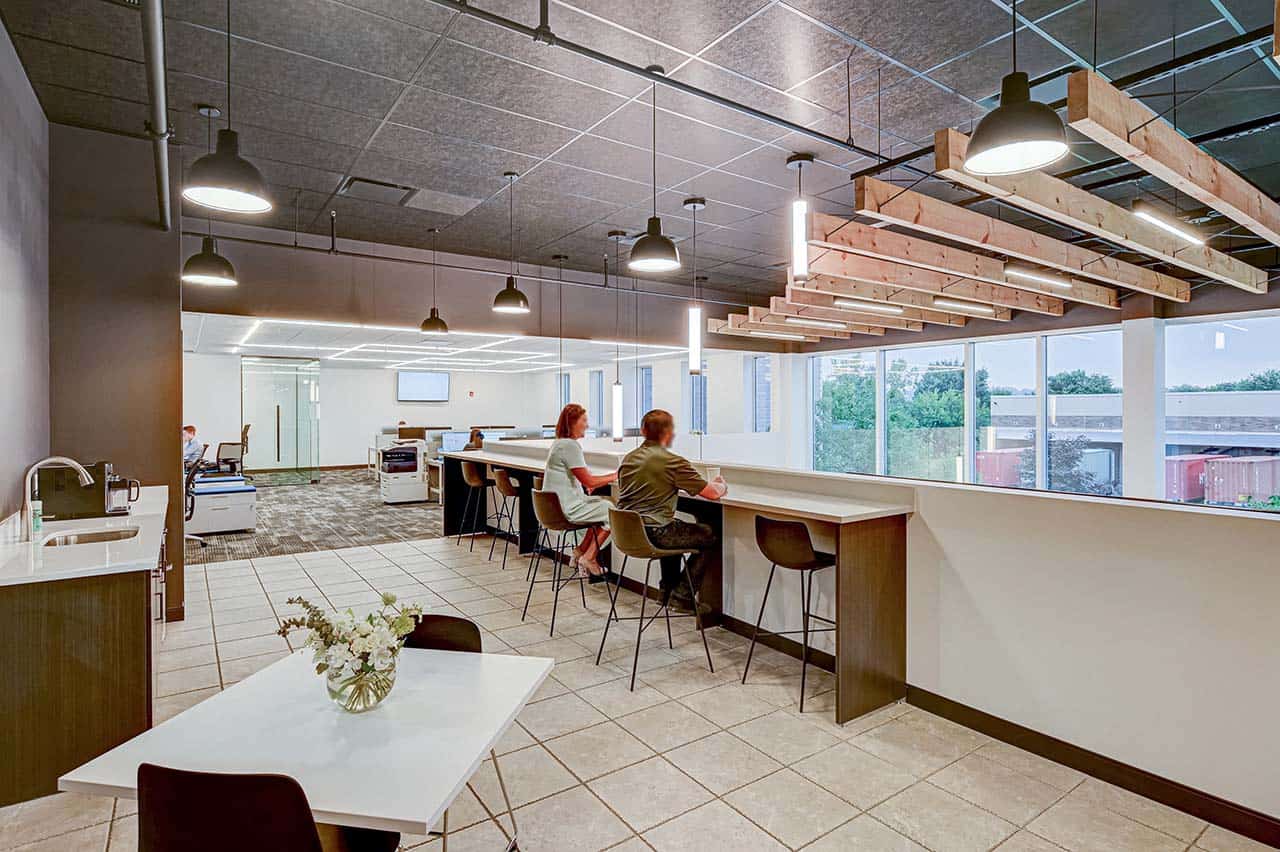
9. Technology-Integrated Spaces
From smart lighting to automated climate control, technology is seamlessly integrated into the workplace. Offices are leveraging tools like virtual reality for immersive collaboration, AI-driven scheduling systems, and smart furniture with built-in charging ports. These advancements enhance productivity and create a modern, efficient work environment.
What’s Out: Offices that fail to incorporate technology and fall behind in functionality.
10. Offices as Destinations
In 2025, offices are being designed as destinations—places employees genuinely look forward to commuting to. Our Workplace Retreat design package embodies this transformation, creating vibrant environments where well-being, focus, and connection thrive. These spaces offer more than just a desk and a chair; they are sanctuaries of productivity and joy, where bonds are effortlessly formed, and creativity flows naturally.
By prioritizing personalized experiences and holistic design, offices become hubs of innovation, collaboration, inspiration (and soaring ROI) —destinations employees genuinely want to return to, day after day.
What’s Out: Spaces that are merely functional but fail to inspire or engage.
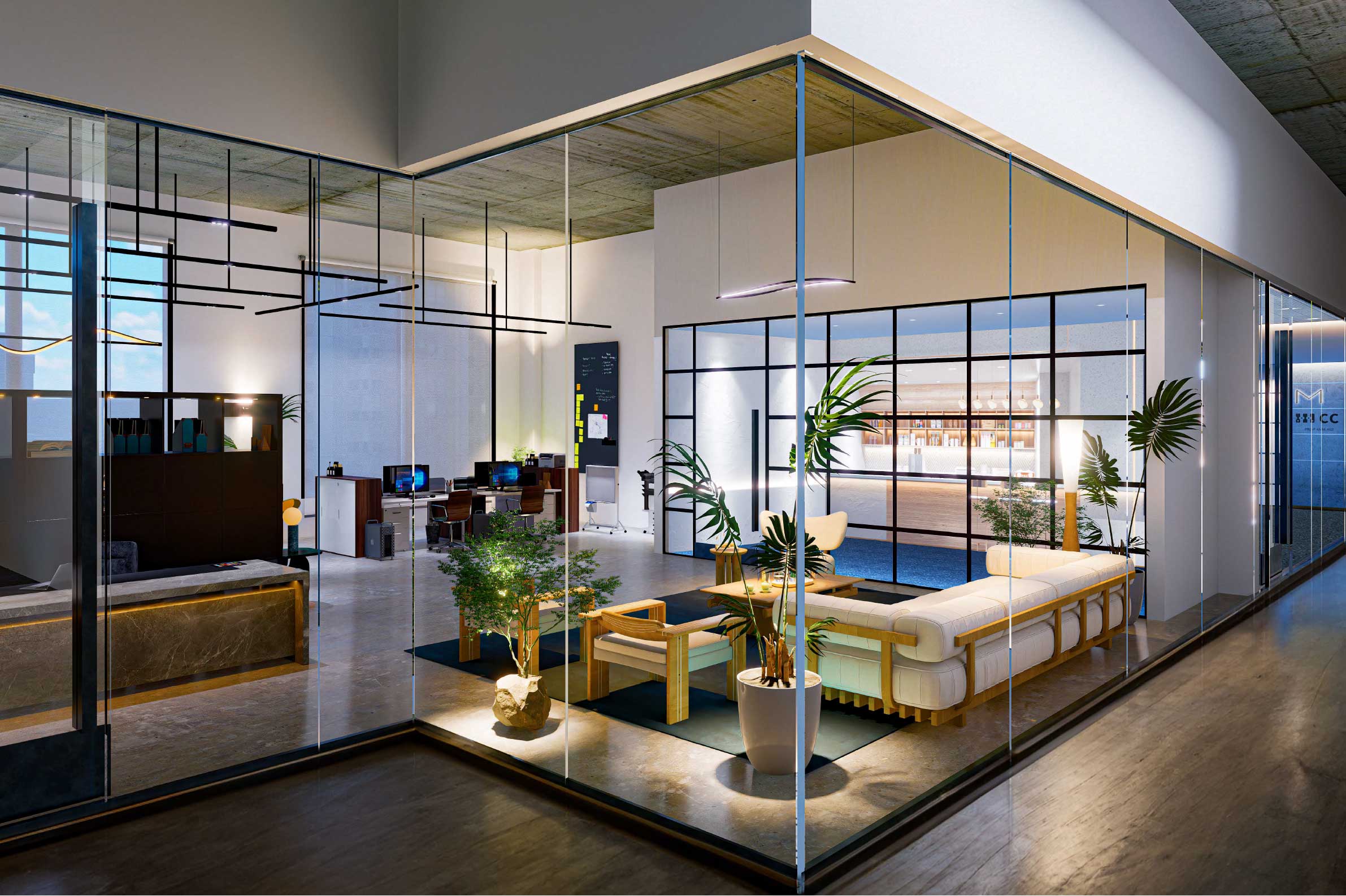
In conclusion…
The office of 2025 is about more than aesthetics. It’s about creating environments that resonate deeply with employees, reflecting their needs, values, and aspirations. From flexibility to sustainability, these trends represent a shift toward intentionality and purpose in every element of office design.
At RI, we specialize in crafting innovative, human-centered workplaces that embrace these trends and help businesses thrive. Ready to design your future? Let’s get started.
